
Bertie Lost off New Jersey
We are saddened to report the loss of Peter Bailey’s lovely yawl Bertie, which was capsized by what he believes was a white squall 65 miles off Atlantic City, New Jersey, at about 8 p.m. on May 29. Bailey and his wife, Heidi Snyder — the only ones aboard at the time — managed to activate their EPIRB and were rescued about three hours after the capsize. At that time, Bertie was on her side and awash, but still floating.
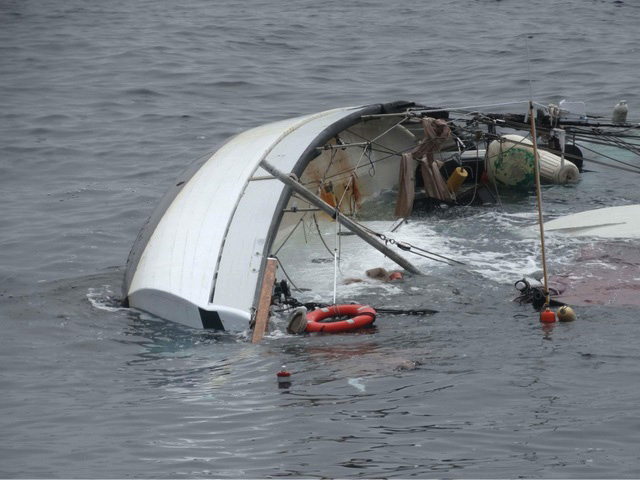
“We were literally swamped and swallowed under within 60 seconds,” said Bailey.
The couple was not seriously injured and was released from the hospital after being checked for hypothermia. They both expressed gratitude to the Coast Guard and hospital staff.
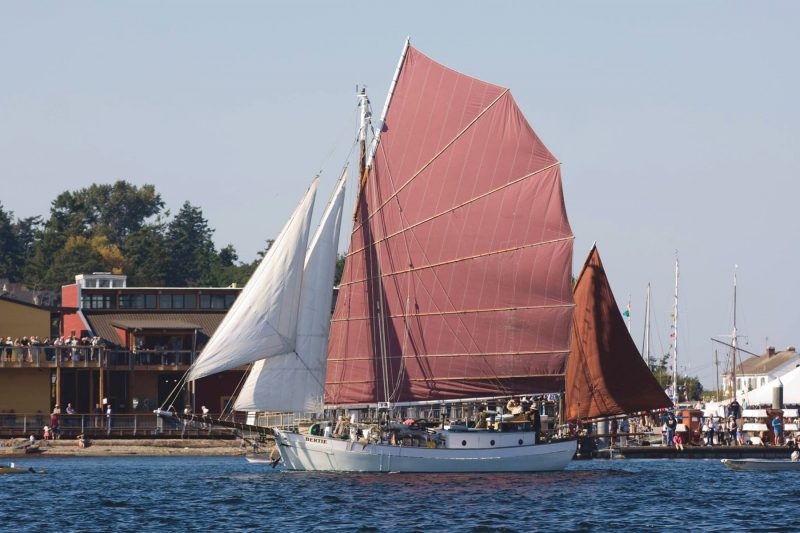
Bailey built Bertie — a 39-ft LOD modified version of Joshua Slocum’s famous Spray — over seven years in the late ‘70s and early ‘80s at Sausalito’s Gate 3 Co-op. The boat was launched on July 11, 1984 and christened by her namesake, his grandmother. The boat, with her tanbark sails and unusual rig — a fully-battened Chinese lug main and a gaff mizzen — was easy to spot sailing the Bay for years afterward, and she always looked impressively trimmed, shipshape and well cared for.
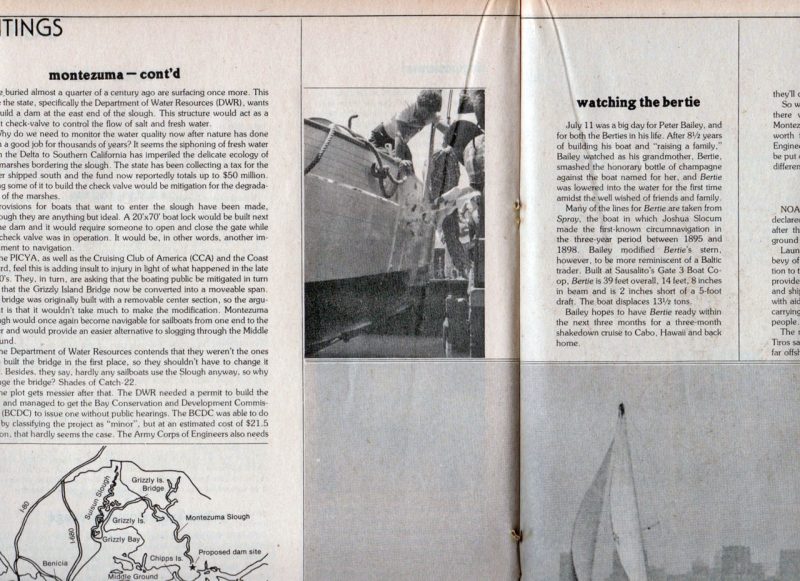
We’re not sure when Bailey and Snyder sailed her out of the Bay, but according to reports following the capsize, they were on the last leg of a circumnavigation. They were headed from the Bahamas to Boston when the squall hit.
The couple lost everything but the literal clothes on their backs. If you want to help them get back on their feet, check out their Gofundme page.
What is a white squall?
A white squall — also occasionally referred to as a microburst — is “a sudden and violent windstorm in tropical or subtropical waters, which is not accompanied by the dark clouds generally characteristic of a squall.” The name refers to froth on the water that is easily seen as it approaches.
We once thought this was an old sailor’s tale until we were clobbered by what could have been one in the Caribbean in the mid-‘70s. It came out of nowhere on a partly cloudy day, and, as noted, you could see the water whipping up as it approached. About all we had time to say was, “WTF is tha…?” before the boat we were on — a heavy-displacement 60-ft ketch — was laid over on its ear. Luckily, we were motorsailing (the wind was light seconds before), with only a steadying sail up, and Mar popped right back up. It was all over in about half a minute. It scared the hell out of all of us, as none of us had ever seen anything like it before (or since, for this writer), and it was only years later that we heard the term ‘white squall’.
The loss of Bertie to a possible white squall reminds us of two other incidents in which boats — and in these two cases, lives — were lost. The first was the loss of the original Pride of Baltimore, a 135-ft recreation of a Baltimore Clipper, which was capsized by a reported white squall about 250 miles north of Puerto Rico in 1986. Four of her 12 crew, including the captain, perished. In 1961, the 92-ft brigantine Albatros — once owned by author Ernest Gann — was capsized off Yucatan in what then-captain Christopher Sheldon called a white squall. Six of 18 people aboard went down with her. Both these incidents also occurred in May.
If you have had any direct experience with a white squall, or a phenomenon like it, we’d like to hear about it.
North to Alaska
Stage 1
In stiff breeze and gnarly chop, the 48 boats that started the first short leg of the fifth annual Race to Alaska on Monday — 40 miles from Port Townsend, WA, to Victoria, BC — took a pounding. Only 37 finished. The docks at Victoria’s Inner Harbor were a carnage-fest of broken gear, torn sails, drowned radios, lost hatches, hulls or amas filled with water, and things lost overboard. But that’s why this short first leg exists — if you need to fix stuff, you’re still within walking distance of the hardware store or chandlery.
Stage 2
But that’s all old news. The ‘real’ R2AK — 710 miles to Ketchikan — started at noon yesterday. As of this morning, the fleet is spread out over almost 100 miles of Inside Passage. Topping the leaderboard are three Bay Area-associated teams. Team Pear Shaped Racing, racing a custom Cochran 10.6M trimaran with Sausalito connections, has covered almost 100 miles and is currently passing Blubber Bay on Texada Island. (Full disclosure: We have zero local knowledge about this area; we’re just reading off the race tracker.) Team Angry Beaver, sailing a former San Francisco-based Schock 40 (ex-Secret Squirrel) being sailed by some of Seattle’s finest, is less than five miles behind. And Team Givin’ the Horns, sailing a Goleta-based Corsair F-31R trimaran, is about six miles behind them. Last year’s winners, the all-woman Melges 32 crew, Team Sail Like a Girl, are currently in seventh place about 30 miles back.
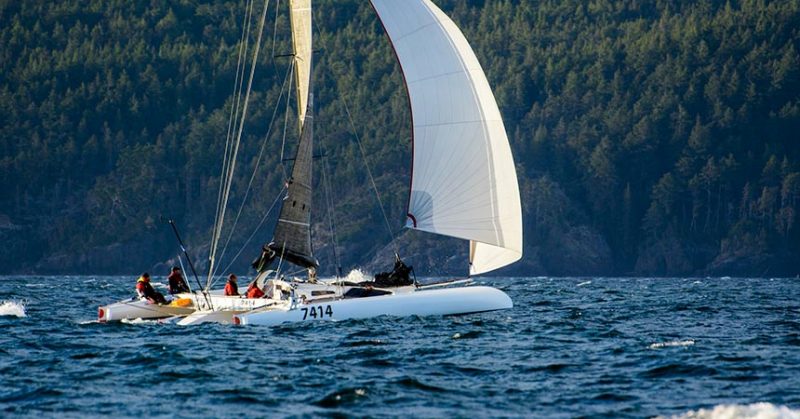
Of course, with 600 miles to go, and several areas of ‘narrows’ where currents can run in the double digits, it’s still anybody’s ballgame.
In case you’re just tuning in, the R2AK is as unique as it is crazy. The only ‘rules’ are “no motor, no outside support.” Which means not only sailboats, but human-powered boats are allowed. So about a quarter of the original entry roster of 48 have no sails at all. They are kayaks, rowboats and even a couple of stand-up paddleboards.
And even the sailboats are hybridized. Due to the fluky and often light nature of the breeze in the Inside Passage, all the sailboats have been fitted with some kind of auxiliary human power — oars, paddles, pedal-driven props and who knows what else.
There are no handicaps and no ‘classes’. The first boat into Ketchikan wins $10,000. The second, a set of steak knives. That’s it.
We’ll have an update — possibly including a winner — on Monday. Until then, you can check in on the progress of the fleet at r2ak.com.
AeroPress: The Better Coffee Press
It Was Fun While It Lasted
It’s a tumultuous world, and you never know when the quiet little cove you’re anchored in is going to suddenly be in the crosshairs of some global dispute. On Tuesday the ‘human wrecking ball’ (as New York Times columnist Thomas Friedman described Trump) and his Treasury Department published new regulations halting group travel to Cuba. Previously, travel had been possible for “people-to-people” educational purposes. That’s now prohibited, along with visits to the island via cruise ships, personal aircraft or personal yachts.
This is true for Carnival Cruise lines, and for cruisers who were looking to amble across the 90 miles from Key West to Cuba for some of the same cruising Europeans and Canadians will continue to enjoy in those unspoiled tropical waters. Members of the Corinthian Yacht Club in Tiburon have now had to cancel their annual commodore’s cruise scheduled to go to Cuba this July.
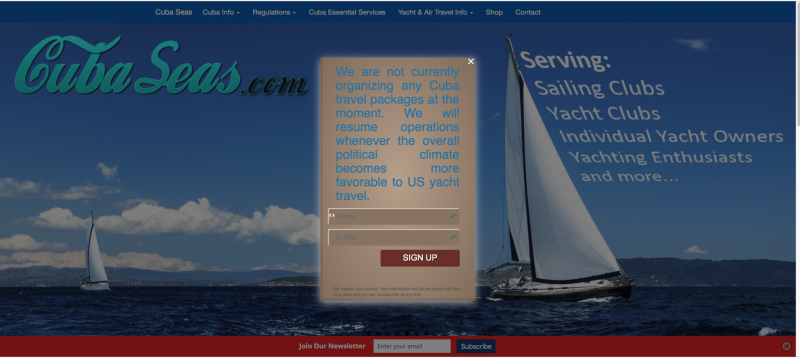
Like all new rules, it will take some time to sort out how this one will be applied and enforced. But, according to the Washington Post, a Commerce Department spokeswoman said, “Cruise ships as well as recreational and pleasure vessels are prohibited from departing the US on temporary sojourn to Cuba effective tomorrow.”
Latitude 38 founder Richard Spindler took his Ocean 71 Big O to Cuba just over 20 years ago. He wrote, “American sailors, of course, have long been able to take their boats to Cuba on the condition they not ‘trade with the enemy’ by spending any money once they get there. Ho, ho, ho, that’s a funny one!” He continued: “We spent nearly two weeks cruising the north shore of Cuba on Big O and marveled at two things: 1) How unspoiled and undeveloped the country is, and 2) How awful slavery is. Teenagers in America complain about ‘not having a life’, but in Cuba it’s really true. Those hopeless people have nothing to do all day but sit around and wait to die.”
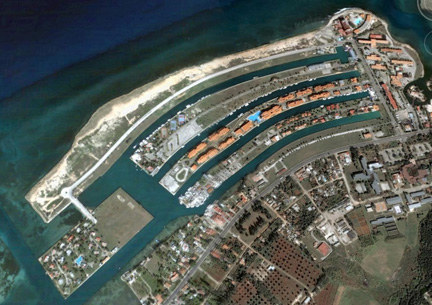
Spindler took Big O to Cuba during the Clinton years when the Coast Guard “advised” them not to go but didn’t try to stop them. Upon arrival, they found there were already plenty of Americans on their boats in the Cuban marinas. Under George W. Bush, the US clamped down again, and all the American boats cleared out. Obama’s administration loosened restrictions again. Of course, this all started after Fidel Castro took over and Kennedy imposed economic sanctions in 1962.
The loosening up under Obama helped stop desperate ‘boat people’ escaping in rafts and re-start some friendly inter-island racing in the Conch Republic Cup from Key West to Cuba. The Bay Area’s Peter Krueger participated with his J/125 Double Trouble in 2016. Jeff Zarwell was the PRO. Race organizers canceled in 2018 due to bad weather. Now the event will be canceled due to this latest form of lower atmospheric disturbance. The Obama thaw also allowed 64-year-old endurance swimmer, Diana Nyad, to complete the 103-mile swim from Cuba to Key West in 53 hours in 2013.
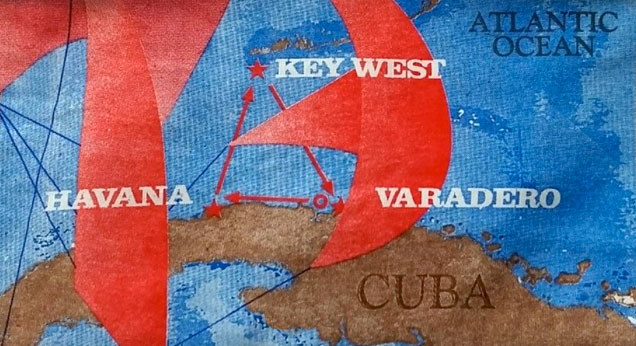
One of the reasons we enjoy sailing is escaping all the turmoil ashore. Yet somehow it can find you wharever you escape. Soybean farmers in Iowa might feel the same way. Cruisers in the turquoise-blue waters of Cuba are caught up in a similar Tweet-storm as farmers in the bucolic fields of the Midwest. The amber waves of grain are as disturbed as the sea to shining sea.
Will American cruisers be able to sail to Cuba as long as they don’t ‘trade with the enemy’? Will French, Germans, Canadians and other cruisers miss the American cruisers who will be departing again? The ebb and flow of sanctions has disrupted the course of many sailors, but neither loosening nor tightening sanctions has appeared to change the course of Cuba. While this storm blows through, sailors will once again need to adjust their sails and head for calmer waters.
World Oceans Day Is Tomorrow
Saturday, June 8, is World Oceans Day. We’re giving a shout-out to all the fantastic people and organizations around the world that are stepping up and working to clean up the oceans and waterways, and to those helping from the other end of the solution — reducing the amount of trash that we create and allow to enter the sea.
The United Nations website tells us that oceans play a major role in everyday life. And put simply: “They are the lungs of our planet, providing most of the oxygen we breathe.”
Oceans provide food for the millions of people who live near their shores. They provide medicines, and they are a “critical part of the biosphere.” And it is up to us, land dwellers and sailors, to ensure that we are doing everything possible to reduce our impact and undo the damage already done. As one person you might say, “But what can I do?” The answers are simple, and varied.
One person can choose to reuse, recycle or refuse. Businesses and organizations across the globe are changing how they operate and what they produce. Individual consumers are changing how and what they purchase and how they dispose of or recycle waste.
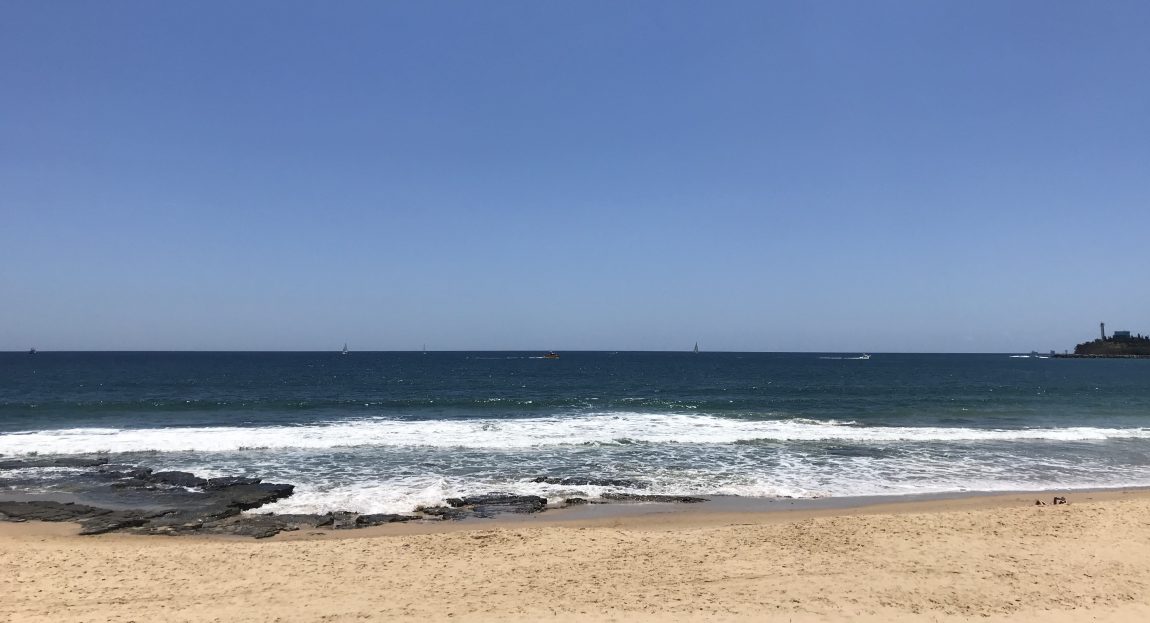
And we have help. Organizations such as Sailors for the Sea and ASA’s ‘Operation Plastic Purge’ have partnered with sailing communities such as Summer Sailstice to help spread the message and educate sailors about their role in ocean stewardship. Other organizations such as 4Ocean and The Ocean Cleanup are on the water removing thousands of tons of trash and feeding the momentum that is growing throughout the world
All of these people are you and I, the everyday people whose everyday lives are directly or indirectly linked to the ocean. We are the change we want to see. Let’s give ourselves a pat on the back for what we do, and encourage others to join us in cleaning and restoring natural health to our oceans, and ultimately ourselves.
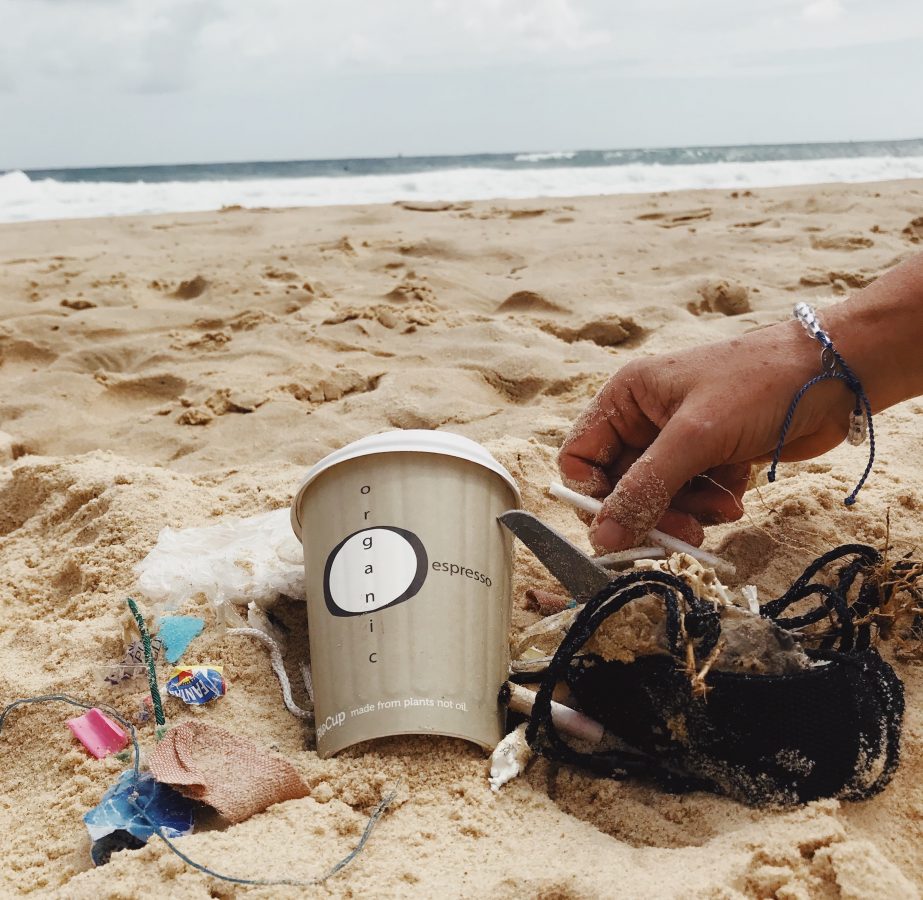
If you’re ready to take action, have a look at the map of World Oceans Day events and find one near you. It won’t be hard; they’re everywhere.
Happy World Oceans Day!


